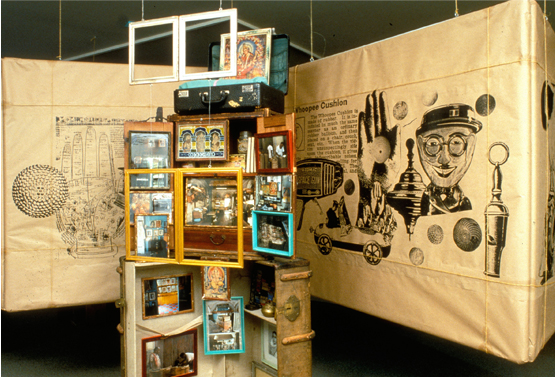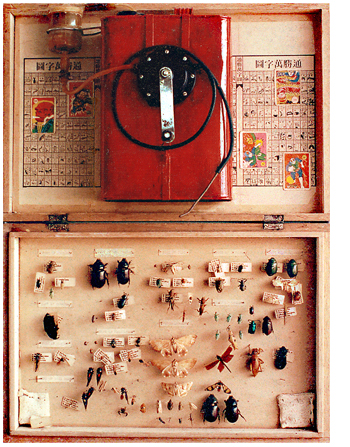
Sime/Darby and Rubber Research Institute
Malaysia
Were this an anthropological study, Fels’s method might be to rationalize and classify the human relationships of his study. Instead, this installation shies away from linear, explanatory narrative in favor of more poetic form…the list of contributors to the project is indicative of Don Fels’s spirit of collaboration and resourcefulness.
– Exhibition Guide, “Trading Stories”
Working in Penang, Malaysia from 1991-93 on a museum exhibition, Fels developed a close relationship with Tan Kai Hin, a Vice President at multinational Sime Darby. Kai Hin provided connections to the state operated Rubber Research Institute, the largest commodity research facility in the world. Over several months, Fels traveled to rubber related installations throughout the country where he met with staff and toured facilities.
Fels also developed connections with the Datuk Keramat Smelter (then the largest tin smelter in the world), the Franklin Mint in Malaysia, and the Muzium Negara numismatic collection (attached to an important bank in Kuala Lumpur). The visits provided the underpinning for “Trading Stories”, an exhibition created for the Tacoma Art Museum. Fels was able to have castings made at the Franklin Mint facility from pewter (a material made from 98% tin, donated to the project by the smelter) of historic tin animals from the bank’s collection.
The animals came to be made of tin after the British forbade the slaughtering of live animals, which had been done to bring good fortune to a new mine. The cast animals embody elements of ritual practice, colonialism, and craft. Fels obtained the figures by co-joining modern manufacturing facilities – the story of which became a narrative through-line for the exhibition itself. The tin animals became symbolic objects in the playing out of his networking in action.
During the time of Fels’ stay in Penang in the early 1990’s, Malaysia was the leading producer of rubber and tin, yet moving quickly to develop an economy based on manufacturing and knowledge rather than extraction. The national strategy involved using the country’s agricultural and mining expertise in consultation with developing countries. Following this thread, Fels visited the ex-Michelin rubber plantation in Viet Nam. Napalmed, bombed and bulldozed during the Viet Nam War, the enormous plantation was being replanted with help from several countries. Fels was the first American in the area since the war. The ex-Viet Cong general in charge of the rebuilding welcomed Fels and their exchange culminated in a banquet to fete the event.
At the end of his time in Malaysia, Fels was invited to create an exhibition for the Penang Museum; the work that was shown was accorded much attention by the press. Celebrated for his ability to bridge several cultures within and without Malaysia, Fels found himself in the pleasing role of introducing institutions, people, and constituencies to one another.


